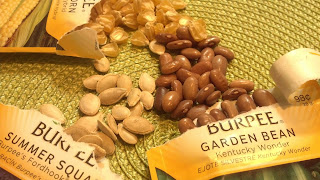 |
| Grow Your Own Container Garden |
And, if you're just joining us in growing a garden, it's not too late. You can plants seeds up until two and a half months before a frost or very cold weather. That means, as late as August or early September in Madera County.
So, just scroll down to see the posts for each step starting with number #1 - #4 below, to learn how to do it right!





